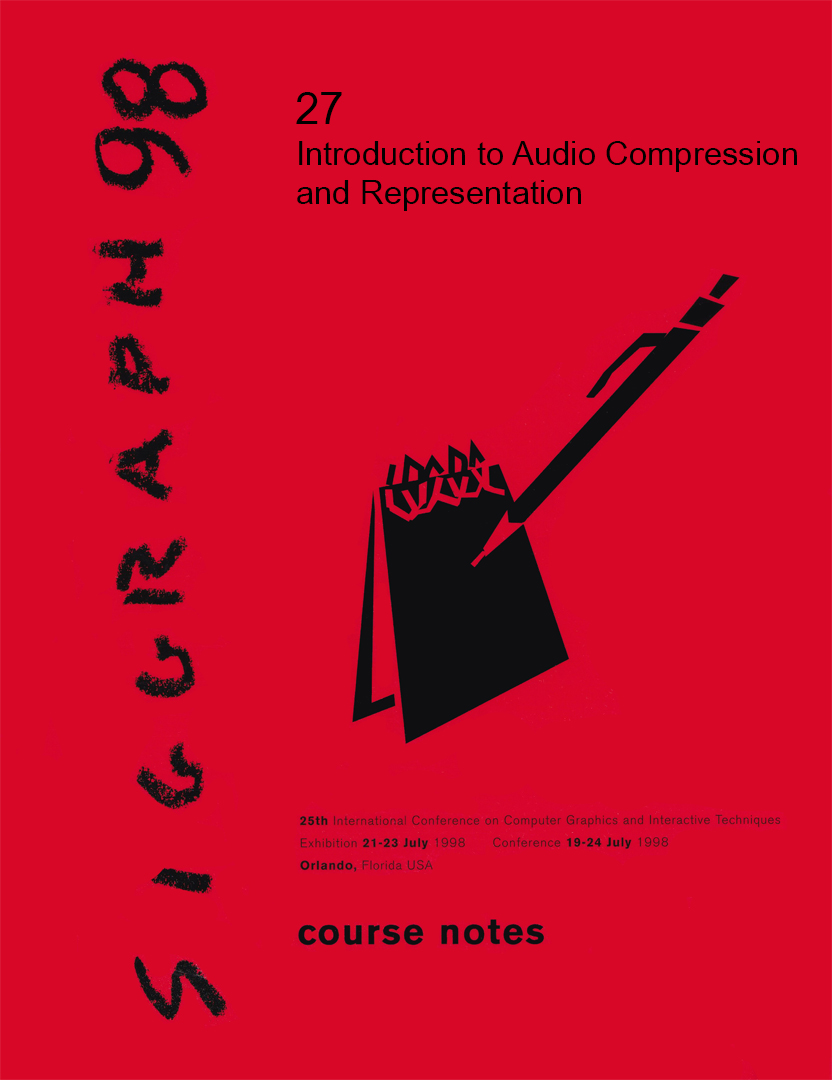“Introduction to Audio Compression and Representation” by Cook
Conference:
Type(s):
Title:
- Introduction to Audio Compression and Representation
Organizer(s):
Presenter(s)/Author(s):
Entry Number: 27
Abstract:
Prerequisites
Familiarity with the concepts of sampling and aliasing. Specific knowledge of Fourier or wavelet transforms not required, but familiarity with the time and frequency domain representations of data helpful.
Topics Covered
Statistically based compression of audio waveform data is basically useless, and loss-less compression of audio is generally impossible above the very lowest compression ratios. Incorporation of psycho-acoustic principles in a perceptually loss-less system makes higher compression ratios possible. Sound examples were played to demonstrate the tradeoffs of different algorithms and compression ratios.
Description
This course began with an introduction to waveform sampling and transmission and storage issues, followed by an introduction to psycho-acoustics that covered the unique acuities and limits of the human auditory system. Waveform compression, model-based speech compression, and psychoacoustically based frequency domain compression algorithms were covered. MIDI and other music representation schemes were introduced, in the context of existing music storage and manipulation systems as well as potential future compression schemes. Emphasis was on the tradeoffs of quality, compressed data size, and flexible data manipulation. C code examples were made available for various compression algorithms.
Contents/Schedule PDF:
Contributed By:
- Mary Whitton
Location:
- Charles Babbage Institute Archives, University of Minnesota





